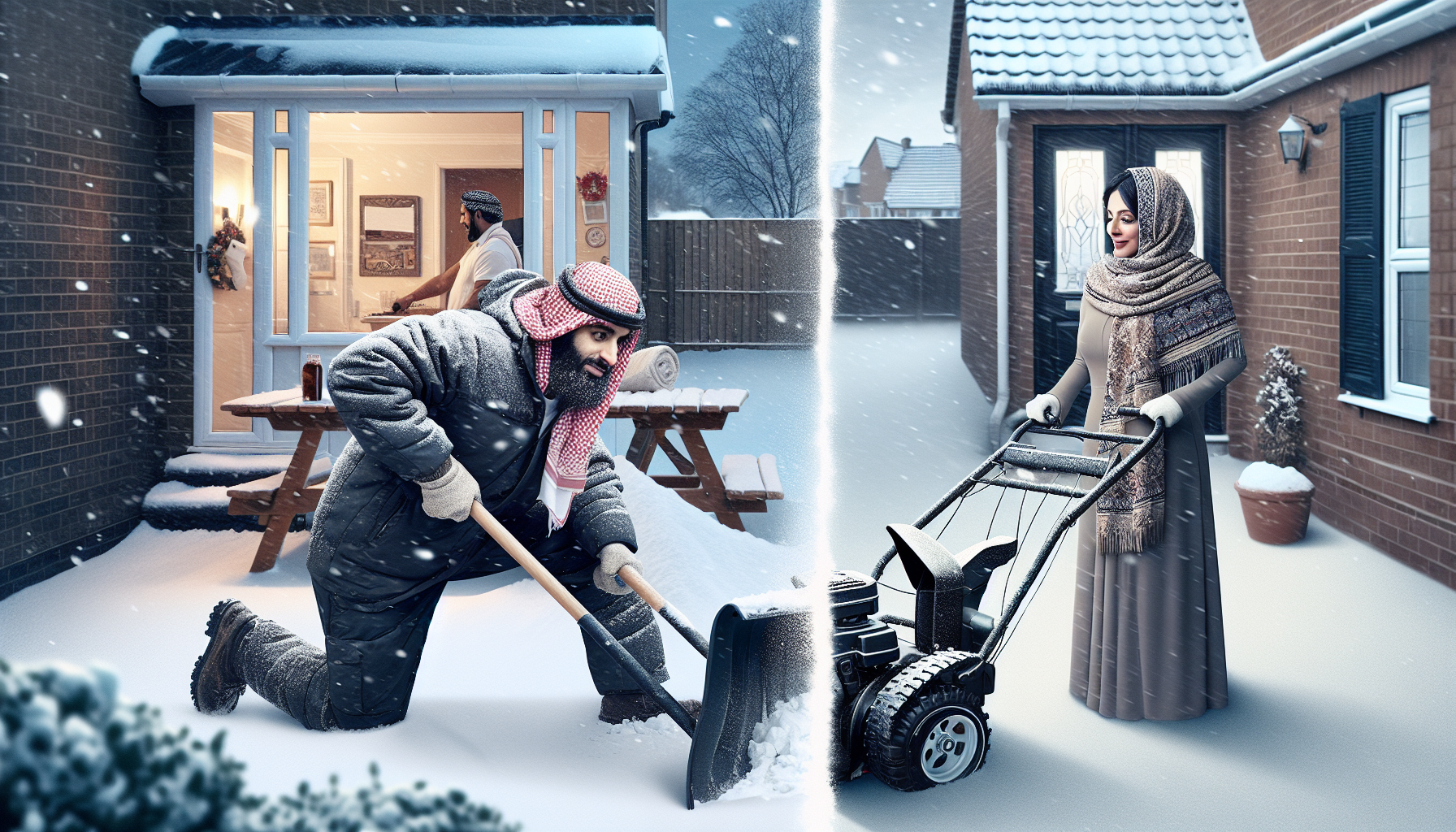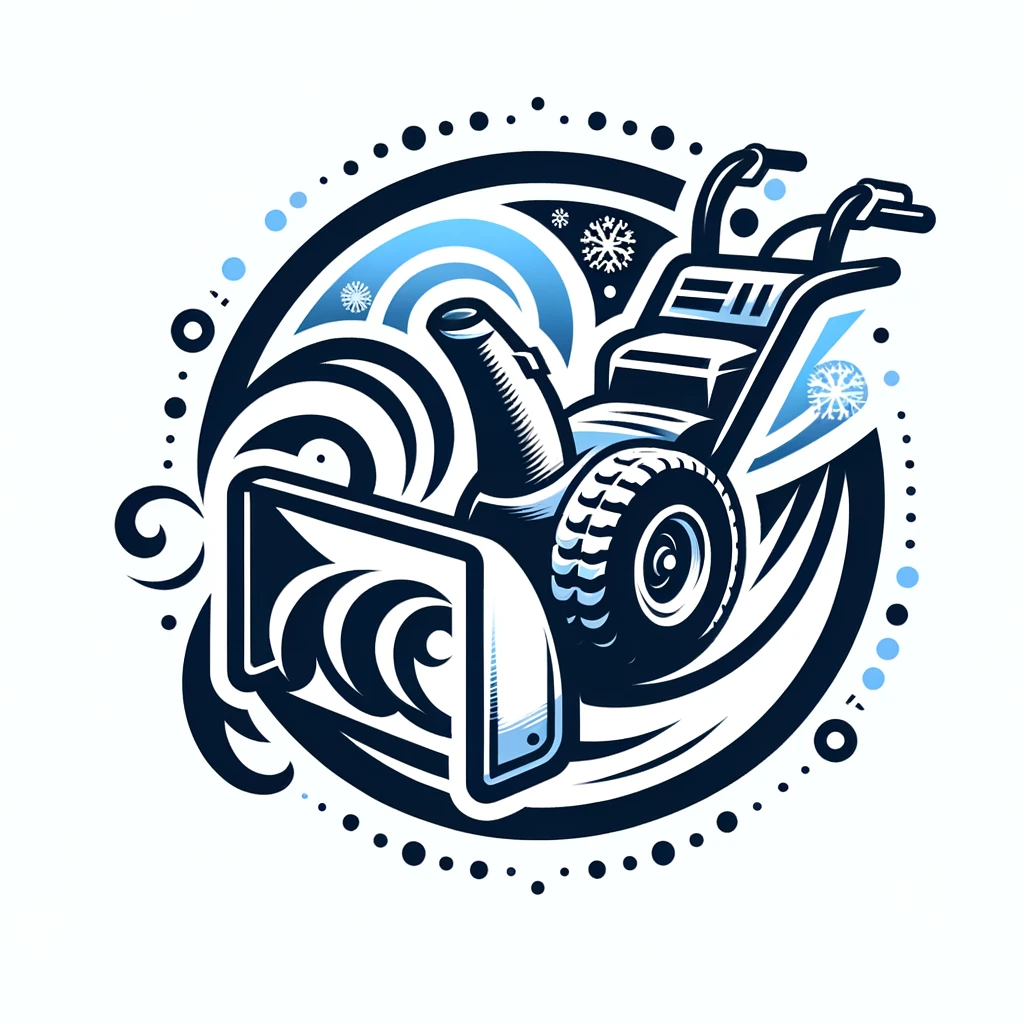Are Snow Blowers Worth It? If you’re tired of the back-breaking task of shoveling snow every winter, perhaps it’s time to consider investing in a snow blower. With their powerful engines and efficient snow removal capabilities, snow blowers have become increasingly popular among homeowners. No longer will you have to spend hours laboring in the cold, as a snow blower can quickly clear your driveway and walkways with ease. But before you make a decision, it’s essential to weigh the cost and benefits of owning one. Is the convenience and time saved worth the investment? Let’s explore further to determine if snow blowers are worth it.

Types of Snow Blowers
Single-stage snow blowers
Single-stage snow blowers are compact and lightweight machines that are designed for lighter snowfalls. They usually have a rubber-tipped auger that scrapes the snow off the ground and propels it through the chute to clear a path. These snow blowers work best on flat, paved surfaces and are easily maneuverable in tight spaces like walkways and small driveways.
Two-stage snow blowers
Two-stage snow blowers are more powerful than single-stage snow blowers and can handle heavier snowfalls. They are equipped with an auger that breaks up the snow and a separate impeller that throws the snow out of the chute. This two-stage process allows them to handle wet and compacted snow more effectively. These snow blowers are suitable for larger areas and can handle uneven terrain.
Three-stage snow blowers
Three-stage snow blowers are the most powerful and efficient snow blowers on the market. They have an additional accelerator that speeds up the snow intake, allowing them to handle heavy and wet snow with ease. These snow blowers are ideal for clearing large areas, such as commercial properties or estates with long driveways. They can also handle icy surfaces better than other types of snow blowers.
Electric snow blowers
Electric snow blowers are powered by electricity, either through a cord or a rechargeable battery. They are lightweight and easy to start, making them a convenient option for clearing snow on small to medium-sized areas. Electric snow blowers are typically less powerful than gas-powered models but are quieter, require less maintenance, and produce zero emissions.
Cordless snow blowers
Cordless snow blowers are a type of electric snow blower that is powered by a rechargeable battery. They offer the same benefits as electric snow blowers, such as quiet operation, low maintenance, and eco-friendliness, but with the added convenience of not being restricted by cords. Cordless snow blowers are suitable for smaller areas and are an excellent option for those who prefer a hassle-free and portable snow removal solution.
Advantages of Using Snow Blowers
Time-saving
One of the biggest advantages of using a snow blower is the time it saves compared to shoveling by hand. Snow blowers can clear large areas in a fraction of the time it would take to shovel manually. This is especially beneficial for those who have long driveways or large outdoor spaces to clear.
Efficient snow removal
Snow blowers are designed to efficiently remove snow from various surfaces. Their auger and impeller systems can break up even heavy and compacted snow, ensuring a thorough clearing. With a snow blower, you can quickly remove snow without leaving behind patches or uneven spots.
Reduced physical strain
Shoveling snow can be physically demanding and can put a strain on your body, especially when dealing with heavy snow or icy conditions. Using a snow blower reduces the physical strain and minimizes the risk of injuries, such as backaches or pulled muscles. The machine does most of the work, allowing you to clear snow more comfortably.
Suitable for large areas
Snow blowers, particularly the two-stage and three-stage models, are designed for clearing large areas effectively. They can handle wide driveways, expansive parking lots, or extensive walkways with ease. This makes them a valuable tool for commercial properties or those with significant snow clearing needs.
Versatility in snow conditions
Snow blowers, especially the more powerful models, can handle various snow conditions, from light and fluffy to wet and heavy. They can handle different depths of snow and are designed to break up and clear compacted or icy snow. Whether you’re dealing with a light dusting or a heavy snowfall, a snow blower can tackle the job efficiently.
Considerations Before Buying a Snow Blower
Frequency and amount of snowfall
Before purchasing a snow blower, consider the average snowfall in your area and how often you will need to use it. If you experience heavy snowfalls or live in an area with frequent snowstorms, investing in a more powerful snow blower with a higher clearing capacity would be beneficial. On the other hand, if snowfalls are rare or typically light, a smaller and less powerful snow blower may suffice.
Type of terrain
Consider the terrain you will be clearing with the snow blower. If you have a flat and paved driveway or walkway, a single-stage snow blower would be suitable. However, if you have uneven or gravel surfaces, a two-stage or three-stage snow blower with larger wheels and better traction would be more appropriate. Think about how well the snow blower will maneuver on the terrain you have.
Availability of power source
If you opt for an electric or cordless snow blower, ensure that you have access to a power source for corded models or a fully charged battery for cordless models. It is essential to have a power supply nearby to avoid any limitations or interruptions while clearing snow. Consider the length of the power cord or battery life to determine if it is sufficient for your needs.
Noise levels
Snow blowers, especially gas-powered models, can be quite noisy during operation. If you have noise restrictions in your neighborhood or prefer a quieter snow clearing experience, consider electric or cordless snow blowers. These models are generally quieter and emit less noise pollution, making them a more peaceful option for you and your neighbors.
Storage space
Snow blowers can take up a significant amount of storage space, especially if you have limited room in your garage or shed. Before purchasing a snow blower, consider the dimensions and weight of the machine and assess if you have adequate space to store it when not in use. Some snow blowers have foldable handles or smaller footprints, which can be beneficial if space is a concern.

Cost of Snow Blowers
Initial investment
The cost of a snow blower varies depending on the type, brand, and features. Single-stage snow blowers tend to be more affordable, with prices starting around $200. Two-stage and three-stage snow blowers are generally more expensive, with prices ranging from $500 to over $2000, depending on the model’s size and power. Electric and cordless snow blowers fall in the mid-range price bracket.
Operational costs
Gas-powered snow blowers require fuel and oil for operation, which adds to the operational costs. On the other hand, electric and cordless snow blowers run on electricity, so you’ll need to consider the cost of electricity to charge them. While the operational costs may vary depending on your usage and local energy rates, electric and cordless snow blowers generally have lower operational costs compared to gas-powered ones.
Maintenance and repair costs
Like any machine, snow blowers require regular maintenance to ensure optimal performance and longevity. Gas-powered snow blowers may require periodic oil changes, spark plug replacements, and other maintenance tasks. Electric and cordless snow blowers typically have lower maintenance requirements. However, if any repairs are needed, the cost can vary depending on the extent of the issue and the availability of replacement parts.
Long-term savings
Investing in a snow blower can result in long-term savings compared to hiring a snow removal service or relying solely on manual labor. While the initial investment may seem significant, the ability to clear snow efficiently and effectively can save you money in the long run. Additionally, you can avoid potential costs associated with injuries caused by manual shoveling.
Choosing the Right Snow Blower for Your Needs
Size and clearing capacity
Consider the size of the area you will be clearing and the amount of snowfall you typically receive. Smaller areas with lighter snowfalls can be adequately cleared with a single-stage snow blower, while larger areas or areas with heavier snowfalls may require a two-stage or three-stage snow blower with a higher clearing capacity.
Power source
Decide if you prefer a gas-powered, electric, or cordless snow blower. Gas-powered snow blowers offer more power but require fuel and regular maintenance. Electric and cordless snow blowers are quieter, require less maintenance, and produce zero emissions but may have limitations based on power sources or battery life.
Terrain compatibility
Take into account the type of terrain you will be clearing. Single-stage snow blowers are suitable for flat and paved surfaces, while two-stage and three-stage snow blowers are more compatible with uneven or gravel surfaces. Consider the traction and maneuverability of the snow blower on the terrain you have.
Additional features
Snow blowers come with various additional features that can enhance your snow clearing experience. Features like an adjustable chute, electric start, headlights, reverse gear, and self-propulsion can make operating the snow blower more convenient. Consider which features are important to you and align with your needs.
Budget considerations
Set a budget for your snow blower purchase. Determine how much you are willing to spend and prioritize features and capabilities accordingly. Take into account the initial investment, operational costs, maintenance and repair costs, and long-term savings when assessing the overall value of the snow blower.
Common Features and Functions
Clearing width
The clearing width refers to the width of the snow blower’s path in one pass. It determines the amount of snow the snow blower can clear at once. The clearing width can range from 18 inches for small single-stage snow blowers to 45 inches or more for larger two-stage and three-stage models.
Intake height
The intake height is the maximum height of snow that a snow blower can effectively handle. It is essential to consider your average snow depth and choose a snow blower with an intake height that matches or exceeds it. A higher intake height allows the snow blower to handle more significant snowfalls without getting clogged.
Snow throwing distance
Snow throwing distance refers to how far the snow blower can throw the cleared snow out of the chute. It is important to consider this distance to ensure that the snow is thrown away from walkways, driveways, or other areas that you want to keep clear. Typical snow throwing distances range from 20 to 50 feet, depending on the model.
Auger and impeller system
The auger is the rotating component of a snow blower that scoops up the snow and feeds it into the machine. The impeller is responsible for propelling the snow through the discharge chute. The combination of the auger and impeller in two-stage and three-stage snow blowers allows for efficient snow clearing and handling of heavy or compacted snow.
Adjustable chute
An adjustable chute allows you to control the direction in which the cleared snow is thrown. Some models feature remote-controlled or joystick-operated chutes, making it easy to adjust the direction while operating the snow blower. Consider the range of adjustability and ease of use when selecting a snow blower.
Electric start
Electric start is a convenient feature that allows you to start the snow blower with the push of a button, eliminating the need for manual pull-starting. This feature is particularly useful in cold weather or for those who may have difficulty with manual starting methods.
Headlights
Headlights on a snow blower can improve visibility and allow you to clear snow in darker conditions, such as early mornings or evenings. This is especially beneficial if you have a long driveway or need to clear snow during the winter months when daylight hours are limited.
Reverse gear
A snow blower with a reverse gear allows you to move the machine backward, making it easier to navigate tight spots or reposition the snow blower if needed. This feature can enhance maneuverability and overall ease of use.
Self-propulsion
Self-propulsion is a feature that allows the snow blower to move forward without requiring you to push it manually. This is especially beneficial for larger and heavier snow blowers, as it reduces physical exertion and makes clearing snow less strenuous.
Benefits of Single-stage Snow Blowers
Compact and lightweight
Single-stage snow blowers are designed to be compact and lightweight, making them easy to store and maneuver. Their smaller size also makes them more suitable for areas with limited storage space.
Suitable for smaller areas
Single-stage snow blowers are ideal for clearing smaller areas, such as sidewalks, walkways, or shorter driveways. Their maneuverability and narrower clearing width make them effective in tight spaces where larger snow blowers may be less practical.
Easy to maneuver
Due to their compact size and lightweight nature, single-stage snow blowers are easy to maneuver. You can swiftly navigate corners, turns, and obstacles without much effort, resulting in a smoother snow clearing experience.
Affordable
Single-stage snow blowers are generally more affordable than two-stage or three-stage models. They offer a cost-effective solution for those with smaller snow clearing needs or who want to stay within a budget while still enjoying the benefits of a snow blower.
Advantages of Two-stage and Three-stage Snow Blowers
Increased clearing capacity
Two-stage and three-stage snow blowers have a higher clearing capacity compared to single-stage models. They can handle larger volumes of snow, making them suitable for areas with heavy snowfalls or properties with larger surfaces to clear.
Effective for heavy snowfall
Due to their powerful auger and impeller systems, two-stage and three-stage snow blowers are highly effective in tackling heavy snowfalls. Their ability to break up and throw snow efficiently allows for quicker and more thorough snow removal, even in deep or compacted snow.
Suitable for larger areas
If you have a large driveway, parking lot, or expansive outdoor space, a two-stage or three-stage snow blower is a better choice. These types of snow blowers have wider clearing widths and higher throwing distances, enabling them to clear larger areas more efficiently.
Enhanced throwing distance
Two-stage and three-stage snow blowers can throw snow at a greater distance compared to single-stage snow blowers. This feature is particularly useful if you need to clear snow away from buildings, walkways, or other spaces where the accumulated snow may pose a nuisance or obstruction.
Benefits of Electric and Cordless Snow Blowers
Environmentally friendly
Electric and cordless snow blowers produce zero emissions, making them an environmentally friendly option. Unlike gas-powered snow blowers, they do not contribute to air pollution, making them a greener choice for snow removal.
Quiet operation
Electric and cordless snow blowers operate with significantly less noise compared to gas-powered models. This is particularly beneficial for those who live in noise-sensitive areas or prefer a quieter snow clearing experience.
Low maintenance
Electric and cordless snow blowers generally have lower maintenance requirements compared to gas-powered models. There is no need to worry about oil changes, spark plug replacements, or fuel mixing. Regular cleaning and storage maintenance are usually sufficient to keep these snow blowers in good working condition.
Easy to start
Starting an electric or cordless snow blower is as simple as pressing a button or flipping a switch. There is no need to deal with pull-starts or priming the engine, making these types of snow blowers incredibly user-friendly, especially for those who may struggle with manual starting methods.
No need for gas or oil
Electric and cordless snow blowers eliminate the need for fuel or oil, saving you money and avoiding the hassle of refueling or replenishing oil. This not only reduces operating costs but also eliminates the possibility of dealing with spills or odors associated with gas-powered machines.
Common Concerns about Snow Blowers
Cost-effectiveness in areas with light snowfall
Some people may question the cost-effectiveness of purchasing a snow blower if they live in areas with light snowfall. However, even in regions with infrequent snowstorms, having a snow blower can still be worth it in terms of time and physical strain saved. It ultimately depends on personal preference and the level of convenience one is seeking.
Limited effectiveness on icy surfaces
While snow blowers can handle various snow conditions, they may have limitations when it comes to clearing icy surfaces. It is important to exercise caution and consider additional measures, such as applying de-icing agents or manually breaking up ice before using a snow blower.
Need for proper maintenance
To ensure optimal performance and longevity, snow blowers require regular maintenance. Neglecting maintenance tasks can lead to reduced efficiency, clogging, or even damage to the machine. It is important to follow the manufacturer’s guidelines regarding maintenance procedures and schedules.
Safety precautions
Operating a snow blower requires certain safety precautions to minimize the risk of accidents or injuries. It is crucial to read and follow the manufacturer’s instructions for safe operation. This includes wearing protective clothing, keeping hands and feet away from moving parts, and being aware of potential hazards in the surrounding area.
In conclusion, snow blowers can be a valuable investment for those living in areas with snowfall. They come in various types, each with its own set of advantages and considerations. When choosing a snow blower, factors such as snowfall frequency, terrain, power source, and budget should be taken into account. Snow blowers offer time-saving, efficient, and less physically demanding snow removal compared to manual shoveling. Whether you opt for a single-stage, two-stage, three-stage, electric, or cordless snow blower, the convenience and benefits they provide make them worth considering for your snow clearing needs.


